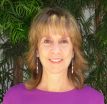(Press-News.org) In the world of biomolecules such as proteins and the hereditary nucleic acids DNA and RNA, three-dimensional structure determines function. Analysis of the passage of such molecules through nanopores offers a relatively new, but highly promising, technique for obtaining information about their spatial conformations. However, interactions between the test molecules and the proteins used as pores have so far hindered quantitative analysis of the behavior of even simply structured molecules within nanopores. This problem must be solved before the technique can be routinely used for structure determination. In a project carried out under the auspices of the Cluster of Excellence "Nanosystems Initiative Munich" (NIM), researchers led by LMU physicist Professor Ulrich Gerland and Professor Friedrich Simmel (Technical University of Munich) have developed a new method that depends on the analysis of reverse translocation through asymmetric pores, which minimizes the interference caused by interactions with the pore material itself. This approach has enabled the team to construct a theoretical model that allows them to predict the translocation dynamics of nucleic acids that differ in their nucleotide sequences.
The nucleic acids RNA and DNA both belong to the class of molecules known chemically as polynucleotides. Both are made up of strings of four basic types of building blocks called nucleotides, which fall into two complementary pairs. In their single-stranded forms, DNA and RNA can fold into what are called secondary structures, as complementary nucleotides in the sequence pair up, forcing the intervening segments to form loops. If the single-stranded loop is very short, the secondary structure is referred to as a hairpin. As in the case of proteins, the secondary structures of nucleic acids influence their biochemical functions. The elucidation of the secondary structure of nucleic acid sequences is therefore of great interest.
"Nanopores are increasingly being employed to investigate the secondary structures of RNA and DNA," Gerland points out. "Passage through narrow nanopores causes the sequence to unfold, and the dynamics of translocation provide insights into the structural features of the molecules, without the need to modify them by adding a fluorescent label. The technique is relatively new, and its potential has not yet been fully explored."
In the new study, he and his collaborators used a new experimental procedure, which allowed them to quantitatively describe the passage of simply structured polynucleotide sequences through nanopores, and develop a theoretical model that accounts for their findings. This level of understanding has not been achieved previously, because complicating factors such as interactions between the protein nanopore and the polynucleotide have had a significant influence on the measurements and made it difficult to predict the behavior of the test molecules.
Thanks to a clever change in experimental design, the impact of these factors has now been minimized. The trick is to perform the measurements on molecules as they translocate through the pore in reverse. First, the polynucleotide of interest is forced through the conical orifice from one side under the influence of an electrical potential. This causes its secondary structure to unfold and, as it emerges, the molecule refolds. An anchor at the end of the polynucleotide chain prevents it from passing completely through the pore onto the other side. For the return journey the potential is reversed, so that the process of unfolding now begins at the narrow end of the pore, and at this point the analysis is initiated.
"In contrast to the situation during forward translocation, no significant interactions appear to take place during the reverse trip," says Simmel.
On the basis of their experimental measurements, the researchers went on to construct a theoretical model that enabled them to predict the translocation dynamics of various hairpin structures with the aid of thermodynamic calculations of so-called "free-energy landscapes".
"This model could in the future provide the foundation of a procedure for the elucidation of the secondary structures of complex polynucleotides," says Gerland.
INFORMATION:
Publication:
"Quantitative Analysis of the Nanopore Translocation Dynamics of Simple
Structured Polynucleotides"
S. Schink, S. Renner, K. Alim, V. Arnaut, F.C. Simmel, U. Gerland
Biophysical Journal Vol. 102, January 2012, pp 1-11
doi: 10.1016/j.bpj.2011.11.4011
Contact
Prof. Dr. Ulrich Gerland
Biological Physics and Quantitative Biology
Arnold Sommerfeld Center for Theoretical Physics, LMU
Phone: +49 89 2180 4514
Email: gerland@lmu.de
Website: http://www.theorie.physik.uni-muenchen.de/lsfrey/members/group_leaders/ulrich_gerland/index.html
END
Dr. Timothy Byrd, dentist in Alpharetta, GA, of Byrd Dental Group is pleased to maintain three convenient office locations for easy access to dental health care for patients. Dr. Byrd invites patients to visit any of Byrd Dental Group's three locations for increased convenience and care.
All three offices strive to deliver quality dental care to informed patients in Woodstock, Douglasville and Alpharetta, GA areas. With three offices, patients can visit the location that is closest for them. Each office offers general and cosmetic dental care, including dental implants, ...
As mosquito-borne viral diseases like West Nile fever, dengue fever, and chikungunya fever spread rapidly around the globe, scientists at Virginia Tech are working to understand the mosquito's immune system and how the viral pathogens that cause these diseases are able to overcome it to be transmitted to human and animal hosts.
In nearly every part of the world, humans and animals experience high levels of morbidity and mortality after being bitten by mosquitoes infected with viruses. More than 100 different viruses transmitted by blood feeding arthropods like mosquitoes ...
The only thing better than getting great software, is getting great software FREE! SoftwareMedia is hosting a month-long software giveaway extravaganza, wherein fans of their Facebook page or followers of their Twitter page have the chance to win free software. What's the catch, you ask? SoftwareMedia is expanding its Social Media efforts and is trying to get word out about its company. All you need to do is "Like" or "Follow" and you're one step closer to winning your own copy of Adobe Premiere Pro CS5, Flash Drives, and more!
SoftwareMedia has been ...
WASHINGTON — With recent advances in technology and design, treating municipal wastewater and reusing it for drinking water, irrigation, industry, and other applications could significantly increase the nation's total available water resources, particularly in coastal areas facing water shortages, says a new report from the National Research Council. It adds that the reuse of treated wastewater, also known as reclaimed water, to augment drinking water supplies has significant potential for helping meet future needs. Moreover, new analyses suggest that the possible health ...
Street gangs, drug addiction, child prostitution, homelessness, abuse and neglect are major concerns that affect millions of American youth. According to studies, half of the U.S. youth population (17.6 million kids) is considered "at-risk" of getting into trouble with the law, or "high-risk" and already in trouble.
Our kids need help.
January is National Mentoring Month. A study done by Public/Private Ventures in Philadelphia showed that children matched with mentors through Big Brothers Big Sisters were 46% less likely to begin using illegal ...
Montreal, January 10, 2012 — Adults from 30 to 60 years old, especially those from lower socioeconomic backgrounds, aren't consuming the daily recommended levels of fruits and vegetables. Quebecers, however, eat more of nature's produce than their fellow Canadians.
These are some of the findings of a new Concordia University study, published by Nutrition Journal, which sheds light on who reaches in their fridge crisper often enough to gain the health benefits of a balanced diet comprised of fruits and vegetables.
"People from the Atlantic to the western provinces ...
CORVALLIS, Ore. – New research at Oregon State University provides evidence for the first time that disruption of circadian rhythms – the biological "clocks" found in many animals – can clearly cause accelerated neurodegeneration, loss of motor function and premature death.
The study was published in Neurobiology of Disease and done by researchers at OSU and Oregon Health and Science University. Prior to this, it wasn't clear which came first - whether the disruption of biological clock mechanisms was the cause or the result of neurodegeneration.
"In these experiments, ...
The recent discovery that bisabolane, a member of the terpene class of chemical compounds used in fragrances and flavorings, holds high promise as a biosynthetic alternative to D2 diesel fuel has generated keen interest in the green energy community and the trucking industry. Now a second team of researchers with the U.S Department of Energy (DOE)'s Joint BioEnergy Institute (JBEI) has determined the three-dimensional crystal structure of a protein that is key to boosting the microbial-based production of bisabolane as an advanced biofuel.
The JBEI research team, led ...
An Emory University study published in the January issue of Health Affairs assesses real-world lifestyle interventions to help delay or prevent the costly chronic disease that affects nearly 26 million Americans.
Researchers from Emory's Rollins School of Public Health (RSPH) systematically reviewed the published literature and analyzed 28 studies that tested adaptations of the Diabetes Prevention Program (DPP) trial in real-world settings. Published in 2002, this major clinical trial showed that structured lifestyle programs for people with prediabetes could halve the ...
CHICAGO (January 10, 2012) – According to the results of a new study published in the January 2012 issue of the Journal of the American College of Surgeons, many early-stage breast cancer survivors lacked knowledge about their disease and were not meaningfully involved in treatment discussions or asked their preferences regarding the approach to treatment. As a result, the study's investigators determined that there is a need for improvements in the quality of the surgical decision-making process for these patients.
The retrospective study sought to evaluate the quality ...



